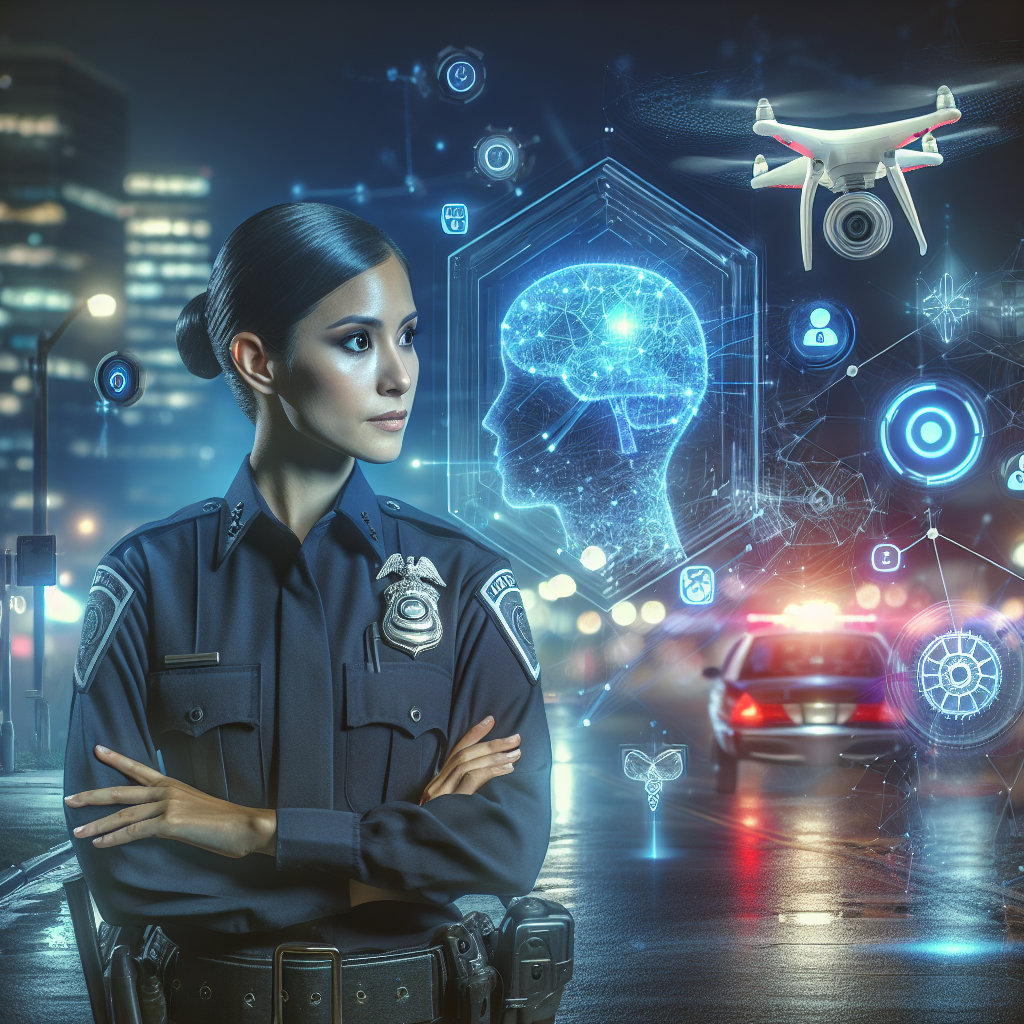Artificial intelligence (AI) has become a powerful tool in various industries, including law enforcement. With the ability to analyze vast amounts of data quickly and accurately, AI-driven solutions are revolutionizing the way law enforcement agencies operate. From predictive policing to facial recognition technology, AI is being used to enhance public safety and improve the efficiency of law enforcement operations.
One of the key areas where AI is making a significant impact in law enforcement is in predictive policing. By analyzing historical crime data, AI algorithms can identify patterns and trends that can help law enforcement agencies anticipate where crimes are likely to occur. This allows police departments to allocate resources more effectively and proactively target high-risk areas, ultimately reducing crime rates and improving public safety.
Another application of AI in law enforcement is in facial recognition technology. This technology allows law enforcement agencies to quickly identify suspects in surveillance footage or photos by comparing their faces to a database of known individuals. This can help solve crimes faster and more efficiently, as well as enhance public safety by identifying potential threats in real-time.
AI is also being used in the analysis of social media and other online data to gather intelligence on criminal activities and potential threats. By monitoring social media posts and online conversations, law enforcement agencies can identify emerging trends and threats, as well as track individuals who may be planning criminal activities. This proactive approach to gathering intelligence can help prevent crimes before they occur and improve overall public safety.
In addition to predictive policing and facial recognition technology, AI is also being used in other areas of law enforcement, such as crime analysis, evidence analysis, and resource allocation. By automating routine tasks and data analysis, AI-driven solutions can free up law enforcement officers to focus on more strategic and high-value activities, ultimately improving the efficiency and effectiveness of law enforcement operations.
Despite the many benefits of AI-driven solutions in law enforcement, there are also concerns about privacy, bias, and transparency. Critics argue that AI algorithms can perpetuate biases and discrimination, especially in the case of facial recognition technology, which has been shown to have higher error rates for people of color. There are also concerns about the lack of transparency in how AI algorithms make decisions, as well as the potential for misuse of AI technology by law enforcement agencies.
To address these concerns, some experts argue for greater oversight and regulation of AI-driven solutions in law enforcement. This could include guidelines for the ethical use of AI, as well as transparency requirements to ensure that AI algorithms are fair and unbiased. Additionally, some advocates are calling for more research into the impact of AI on policing practices and the potential risks and benefits of using AI in law enforcement.
Despite these challenges, the use of AI-driven solutions in law enforcement is likely to continue to grow in the coming years. As technology advances and more data becomes available, AI algorithms will become even more powerful and effective in helping law enforcement agencies prevent and solve crimes. With the right safeguards in place, AI has the potential to revolutionize law enforcement and improve public safety for communities around the world.
FAQs
Q: How is AI being used in law enforcement?
A: AI is being used in law enforcement for a variety of purposes, including predictive policing, facial recognition technology, crime analysis, evidence analysis, and resource allocation.
Q: What are the benefits of using AI in law enforcement?
A: The benefits of using AI in law enforcement include improving public safety, reducing crime rates, enhancing the efficiency of law enforcement operations, and freeing up officers to focus on more strategic activities.
Q: What are the concerns about using AI in law enforcement?
A: Some concerns about using AI in law enforcement include privacy, bias, transparency, and the potential for misuse of AI technology by law enforcement agencies.
Q: How can the concerns about using AI in law enforcement be addressed?
A: The concerns about using AI in law enforcement can be addressed through greater oversight and regulation, guidelines for ethical use, transparency requirements, and more research into the impact of AI on policing practices.
Q: What is the future of AI in law enforcement?
A: The future of AI in law enforcement is likely to continue to grow as technology advances and more data becomes available. With the right safeguards in place, AI has the potential to revolutionize law enforcement and improve public safety for communities around the world.

